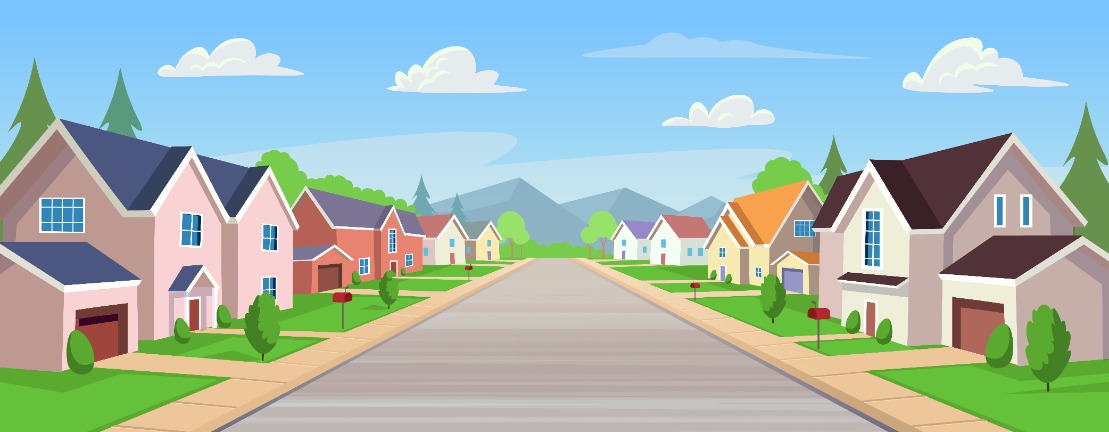Residential broadband — it’s certainly not a new concept, but it is one that’s receiving a lot of attention these days. The global pandemic shone a spotlight on the great digital divide and lack of reliable connectivity for vast swaths of the global population as people found themselves needing to work, learn, socialize and more from home — essentially morphing our residences into small offices/home offices (SOHOs). It reinforced that broadband is an essential utility.
But bringing high-speed internet to underserved or unserved areas isn’t a simple proposition. In many rural and remote locations, the number of homes passed is small and the distance to the nearest network is great. Not to mention that many of these areas are difficult to reach due to rugged terrains, inclement weather conditions and, sometimes, lack of infrastructure. These factors and more can make it economically infeasible for service providers to deploy fiber to the home (FTTH). Looking at rural America as an example, some industry calculations have put the cost of running fiber at around US$200K per home passed. Still, the status quo isn’t an option. Fast, reliable, affordable connectivity is essential for digital equity and economic prosperity for all.
What can be done to address the broadband conundrum?
For one, massive investment. Public and private spending is happening at a once-in-a-generation pace. Across the globe, governments are stepping up to do their part, providing stimulus in the form of grants and loans for broadband expansion. In the U.S., the Infrastructure Investment and Jobs Act is providing US$65B over ten years for broadband deployment, affordability and digital literacy. This is in addition to programs like the Universal Service Fund (USF)/Rural Digital Opportunity Fund (RDOF). In the UK, the government enacted Project Gigabit, a £5B investment that’s making possible the biggest broadband rollout in British history. Meanwhile, in India, the Digital India program is projected to lift the digital economy to US$1T by 2025, according the Ministry of Electronics and Information Technology (MeitY). What’s more, service providers themselves are planning significant investments, anticipated at upwards of US$40B by 2026.
Ubiquitous, affordable and dependable connectivity is the foundational step necessary to address digital inclusion for underserved/unserved communities to enable broader socioeconomic growth. It will also ignite a new wave of cloud-based applications for existing residential broadband consumers. However, let’s be clear: Money alone won’t solve everything. An opportunity of this scale also requires technology innovation.
Many of the applications that are gaining popularity today — things like augmented reality (AR), virtual reality (VR), cloud gaming, 4K streaming — require high-speed connections capable of scalable capacities and ultra-low latency. Now more than ever, households are simultaneously holding Zoom meetings, streaming video and playing games. And there is appetite for more: A recent global study found that 78% of respondents are keen to participate in deeply immersive experiences like the metaverse. These types of bandwidth-intensive activities require a highly reliable and stable network, as consumers (rightly so) aren’t willing to compromise on quality of experience (QoE).
A new approach
To support growing demand for fast home internet connections, the rapid shift to the cloud and expectations for better QoE, service providers are seeking to modernize their networks — and many are turning to universal aggregation (UA) and access to address these challenges.
For years, providers have had to decide between dedicated or shared fiber last-mile access topologies. This entailed deploying multiple network architectures for different service types like IP, Ethernet and time-division multiplexing (TDM). These ‘siloed’ architectures are static, inflexible and often unable to aggregate traffic from new services without introducing more hardware and software into the mix. The result? Increased complexity, negative environmental impact, high operational costs and added troubleshooting duties – not to mention slower time to market for new services. With internet traffic growing at around 29% a year according to the Global Internet Geography report, the existing state of affairs simply isn’t sustainable, making necessary a shift away from conventional methods of deployment and aggregation.
A simpler approach is required. Enter universal aggregation.
As a converged networking solution, universal aggregation supports traffic from IP, Ethernet, TDM, 5G, and residential and business services on a single platform over dedicated and shared fiber.
The benefits are huge for providers. They no longer have to build out separate access networks for different services, allowing for a smaller footprint with increased capacity, lower power and space costs, and less complexity. By removing the constraints of legacy architectures, service providers can create a smarter, more agile, more efficient converged access infrastructure — bringing to market new services faster, more cost-effectively and more sustainably.
Residential broadband for all
For many of us, connectivity at home has dramatically changed over the last 10 years. Home is now the epicenter for hybrid work, entertainment, telemedicine and much more, with 100Mb/s to 1 Gb/s connections increasingly the norm. But a lot of our fellow citizens have access to much lower speeds in the home or no access at all.
With the moves underway in the industry, both funding-wise and technological, that’s about to change. And service providers will find themselves needing to connect new neighborhoods, support the next generation of high-bandwidth applications and improve subscriber experience — all while ensuring a positive business case.
Key to this will be an innovative, future-forward broadband infrastructure that’s easier to deploy, manage and maintain. One with the flexibility to minimize capex and opex while providing the scalability to support subscriber growth and safeguard customer satisfaction.
The steps being taken today will redefine how internet is consumed in our society. Now is the time to embrace a residential broadband network designed for a digital future full of possibilities without compromise — for those that are already connected and those who soon will be.r

